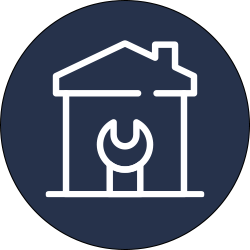There are 13 species of bats in Florida; several of these, including little brown and big brown bats, may be found in residential homes and businesses.
Bat problems fall into one of three categories: roosting bats, a lone bat in the living area of a home, and bats flying around the house. If a bat is identified in the living area of the home, it can be legally be trapped and removed.
During maternity season (usually mid-April to mid-August), it is illegal to remove or exclude bats. After maternity season, the wildlife technician removes bats by installing a one-way bat valve. That allows the bats to safely leave your home but prevents them from re-entering.
Here’s what you need to know about a bat infestation. Plus, how to make your home a bat-free zone.

Bat Control

removal
We will use a bat valve that allows bats to exit your home but prevents re-entry. When it comes to removal, the size of the colony matters. Most colonies only need one bat value, but we will determine the appropriate amount with an inspection. In most cases, we can remove the entire colony within three to seven days.

Bat Exclusion
After confirming the bats have left the building, we will complete a full home exclusion to prevent future flying guests. This involves closing up any possible points of entry with sealant or wire mesh. Other prevention methods include keeping outside lights turned off at night to avoid attracting insects and minimizing water sources on your property.

Remediation
Finally, it’s time to reclaim your home. The accumulation of bat guano can be a significant issue. Bat guano can weaken the phyiscal structure of your home. It can also seep into your ceililng and walls leaving stains and creating unpleasant odors. The fungus Histoplasma can live in bat poop. The fungus can cause an airborn infection called Histoplasmosis. We remove the guano and sanitize the are to protect your health. We also apply ectoparasite treatments to exterminate fleas, ticks, or mites.
Bats in the House
Signs of Bat Infestation
Of the thirteen bat species in Florida, the Little Brown Bat and Big Brown Bat are most likely to roost in your attic. Although each species is different, the first signs of a bat infestation are typically scratching sounds in the attic or within your walls. Noxious smells coming from your attic might indicate a problem. Finally, dropping and stains on the side of your house is another possible indicator of bats.
If you suspect bats, it’s time to conduct a bat watch. A bat watch involves monitoring your home from the outside around sunset. As the sun sets, you might spot bats flying out of your home to start their nocturnal activities.
Problems with Bats
These unique flying mammals do everyone a favor by consuming bugs every night. A little brown bat can eat up to 1,000 mosquitos in an hour. But that doesn’t mean you want a colony moving into your attic.
Bat Damage
Unlike other pest animals, bats cannot create their own entry point. So if they do find their way in, bats will not gnaw or tear apart anything in your attic.
Bat guano and urine can damage your home. Bat urine contains high concentrations of uric acid which can corrode metal. Bat urine also causes the etching of polished surfaces and staining of light-colored fabric and porous stone such as marble and alabaster. Similarly, bat droppings contain potassium, ammonium, and phosphate. The combination of these elements and moisture can lead to corrosion and wood rot.
Finally, bat droppings and urine can stain your wall and create strong odors.
Health Hazards
Unfortunately, bats can spread diseases and cause significant damage to your home. The bulk of the threat comes from bat droppings, otherwise known as guano. With guano in your home, you are at risk of respiratory diseases like histoplasmosis. Beyond the diseases spread through guano, the sheer weight of it can cause structural damage in your home. The seeping excrement can also stain walls, ceilings, and floors.
In addition to guano produced by bats, the bats themselves carry diseases like rabies. With that, it’s clear that bats in your home present a risk to both your health and the integrity of your home.
Call Trutech IN
At Trutech, we have the expertise to handle any nuisance wildlife problem you may have.

Our professional team of licensed technicians will quickly and humanely handle your wildlife needs
Quick Links
Business Hours
- Monday-Friday: 7:30am-6pm
- Saturday: 8am-5pm
- Sunday: Closed
